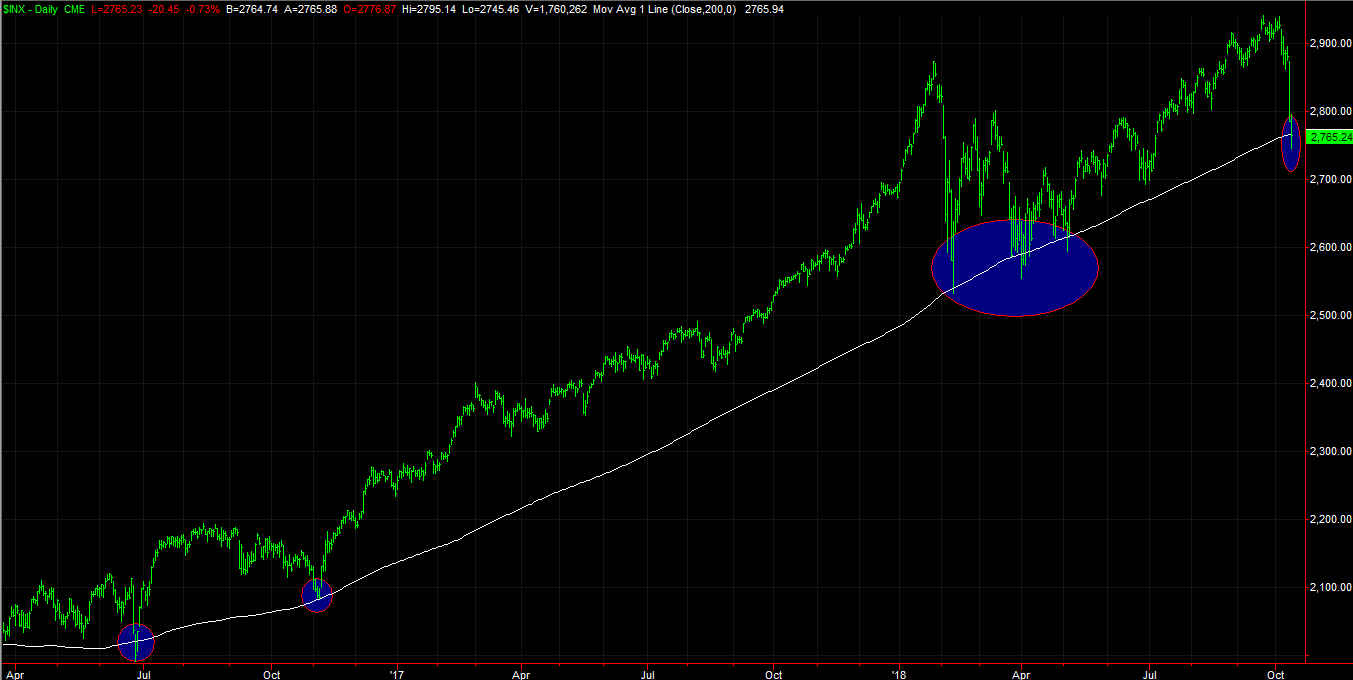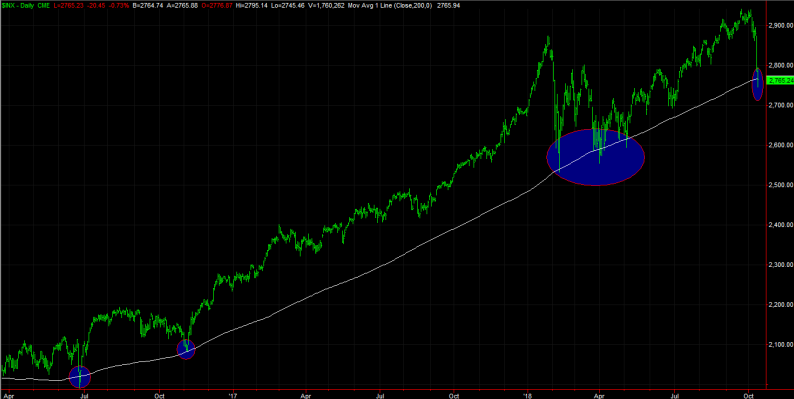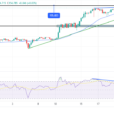If the bulls are going to make a stand and bring an end to the steep selloff, this is where they’ve got the best shot at doing so.
The past several days have been rough for the broad market, though none of those days was as dramatically bad as Wednesday’s drubbing. The S&P 500 lost 3.3% yesterday… the worst single day for the index since February, accelerating an already-budding pullback.
It would be naive to think stocks weren’t due for some sort of correction. The S&P 500 had rallied 14% from April’s low to September’s high, setting the stage for some profit-taking heading into an uncertain earnings season. Prior earnings growth looked solid because the year-over-year comparisons were easy. Going forward, earnings growth may look relatively weaker now that the economic engine has been revving in earnest for over a year.
There are limits, however, perceived and real. One of the technical ones is the 200-day moving average line, which was touched for the first time in weeks on Thursday. So far, it’s holding up as the support line investors would expect it to be.
The chart below makes clear just how important the 200-day line has been, making Thursday’s shaky support anything but surprising.

This is certainly no guarantee that a bounce will take shape immediately ahead.Sooner or later, the 200-day moving average line will fail to act as a floor. Once that happens, the pent-up profit-taking stemming from the 60% gain experienced between early 2016 and last month will become unleashed; the 13% stumble witnessed earlier this year didn’t fully act as a capitulation.
But, until we actually see the S&P 500 make a decided move lower, we can’t assume anything.
It’s also worth noting the sheer size of the recent selloff opens the door to a rebound effort that could be misinterpreted as the beginning of a bigger-picture recovery. Anything dropped from a high enough height will somewhat bounce briefly. One or two bullish days won’t necessarily put the market back into a full-blown bullish trend though. Any lift may only be the overture to another round of selling that drags the index under the 200-day line and then on to lower lows.












Leave A Comment